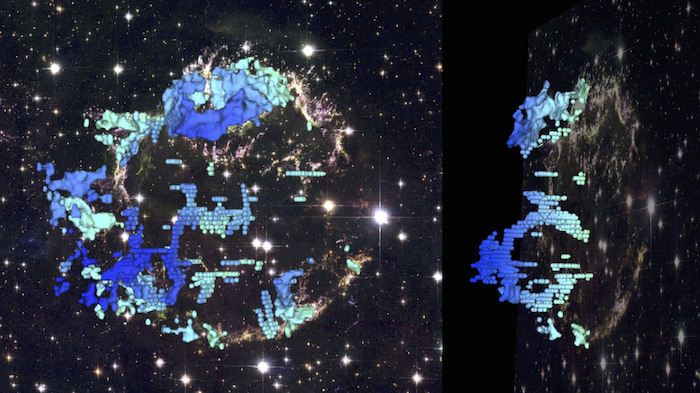.

A new 3-D study of the remains of a supernova explosion called Cassiopeia A (Cas A) has found that its interior is made up of a collection of massive bubble-like cavities. Cas A is one of the most well studied supernova remnants in our galaxy. A team of Harvard-Smithsonian and Dartmouth College astronomers used the astronomical equivalent of a hospital's CAT scan to produce a 3-D map of its interior. "Our three-dimensional map is a rare look at the insides of an exploded star," Dan Milisavljevic of the Harvard-Smithsonian Center for Astrophysics (CfA), said in a statement. The supernova was observed about 340 years ago when a massive star exploded, approximately 11,000 light-years away, in the constellation Cassiopeia. As the star blew itself apart, hot radioactive matter streamed outward from the star's core. The expanding cloud of material is now approximately 10 light-years across from Earth's perspective. The complex physics behind these explosions is difficult to model, even with state-of-the-art simulations run on some of the world’s most powerful supercomputers. However, by carefully studying relatively young supernova remnants like Cas A, astronomers can investigate the key processes that drive these stellar explosions. "We're sort of like bomb squad investigators. We examine the debris to learn what blew up and how it blew up,” said Milisavljevic. "Our study represents a major step forward in our understanding of how stars actually explode."
.

